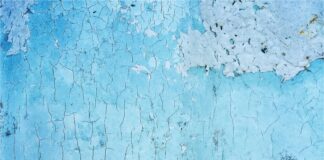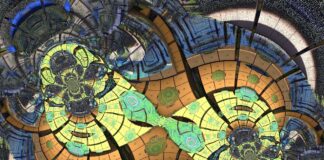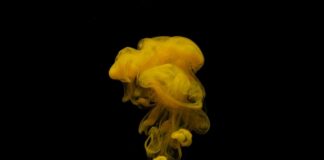Rnfl, or Retinal Nerve Fiber Layer, is a critical component of the human eye’s anatomy that plays a pivotal role in vision. The Rnfl is a layer of nerve fibers that originates from the ganglion cells in the retina and forms the optic nerve. Its significance in the visual process cannot be overstated, as it serves as the conduit through which visual information is transmitted from the eye to the brain. In this comprehensive article, we will delve deep into the intricate details of Rnfl, exploring its structure, function, and relevance in the realm of ophthalmology.
In the realm of ophthalmology, Rnfl, which stands for Retinal Nerve Fiber Layer, is a term that holds immense importance. This delicate layer of nerve fibers is a fundamental component of the eye’s structure, specifically within the retina. The acronym Rnfl will be our guiding star throughout this article as we navigate the complex landscape of retinal anatomy.
The significance of Rnfl cannot be overstated when discussing the visual system. It is within the Rnfl that the initial processing of visual information begins. Before we delve into the intricacies of Rnfl’s structure and function, let us take a moment to appreciate the critical role it plays in the grand orchestra of vision.
Thickness Variability:
The Rnfl exhibits varying thickness across different regions of the retina. This thickness variation is crucial in diagnosing eye conditions, as changes in thickness can signal potential issues.
Nerve Fiber Bundles:
Rnfl consists of bundles of nerve fibers that originate from the ganglion cells in the retina. These bundles are responsible for transmitting visual information from the eye to the brain.
Optic Nerve Formation:
The Rnfl converges at the optic nerve head, where it forms the optic nerve. This optic nerve carries the visual signals to the brain’s visual processing centers, allowing us to perceive the world around us.
Diagnostic Marker:
Changes in the thickness of the Rnfl are often used as a diagnostic marker for various eye diseases and conditions, such as glaucoma and optic neuritis.
Non-Invasive Imaging:
Advanced imaging techniques, such as optical coherence tomography (OCT), are used to non-invasively visualize and measure the thickness of the Rnfl. This technology has revolutionized the diagnosis and monitoring of eye diseases.
These key features highlight the crucial role that the Retinal Nerve Fiber Layer plays in the visual system and its significance in diagnosing and understanding various eye-related conditions.
The study of the human eye has captivated scientists, researchers, and medical professionals for centuries. It is a marvel of biological engineering, a sensory organ that allows us to perceive the world in all its beauty and complexity. Within the intricate web of ocular structures, the Rnfl stands as a testament to the precision and elegance of nature’s design.
To truly appreciate the Rnfl, we must first acknowledge the remarkable nature of vision itself. Vision is often considered the most dominant of our senses, shaping our understanding of the world and influencing our daily experiences. The process of vision begins with the eye, and at the heart of the eye’s functionality lies the retina, a complex and highly specialized tissue.
The retina, like a finely tuned camera, captures incoming light and transforms it into electrical signals that the brain can interpret as visual information. It is composed of multiple layers, each with a specific role in this intricate process. The Rnfl, nestled within the innermost layers of the retina, plays a pivotal role in transmitting these signals to the brain via the optic nerve.
As we delve deeper into the subject of Rnfl, it’s essential to appreciate the evolution of our understanding of the eye and its components. Ancient civilizations marveled at the eye’s complexity, attributing it to mystical forces or divine design. It wasn’t until the Renaissance that pioneering anatomists like Leonardo da Vinci and Andreas Vesalius began to dissect and document the eye’s structure.
The advent of the microscope in the 17th century allowed scientists to explore the eye’s inner workings with greater precision. Visionaries like Antonie van Leeuwenhoek made significant contributions by observing retinal tissue under the microscope, although the Rnfl’s specific structure remained elusive until more recent times.
Advancements in medical imaging have been instrumental in unraveling the mysteries of Rnfl. Techniques like optical coherence tomography (OCT) have revolutionized our ability to visualize the retina in exquisite detail. OCT employs the principles of interferometry to create high-resolution cross-sectional images of retinal structures, including the Rnfl.
Beyond its clinical relevance, the Rnfl has also found a place in the realm of research. Scientists are continually exploring the nuances of Rnfl thickness and its correlation with various eye conditions. This ongoing research not only deepens our understanding of eye health but also holds the promise of early detection and improved management of eye diseases.
Moreover, the study of Rnfl extends beyond human eyes. Comparative anatomy allows scientists to examine the Rnfl in different species, shedding light on the evolution of vision across the animal kingdom. This broader perspective helps us appreciate the commonalities and variations in retinal structures and their adaptive significance.
In the realm of art and culture, the eye has long been a symbol of perception, knowledge, and enlightenment. Artists throughout history have captured the allure of the eye, recognizing its power to convey emotions and ideas. From the intricate depictions of eyes in Renaissance paintings to the surrealism of Salvador Dalí’s “The Persistence of Memory,” the eye has been a source of inspiration for creative minds.
In literature, the eye has often been used metaphorically to explore themes of observation, introspection, and human consciousness. Writers like F. Scott Fitzgerald, in “The Great Gatsby,” employ the symbol of the “all-seeing” eye of Dr. T.J. Eckleburg to comment on societal values and moral decay.
In conclusion, the Retinal Nerve Fiber Layer, while a critical component of our visual system, is part of a much larger narrative. It is a testament to human curiosity, scientific progress, and the enduring fascination with the miracle of vision. Beyond its clinical significance, the Rnfl serves as a reminder of the intricate beauty of the natural world and the boundless avenues of exploration it offers to those who seek to understand it.














